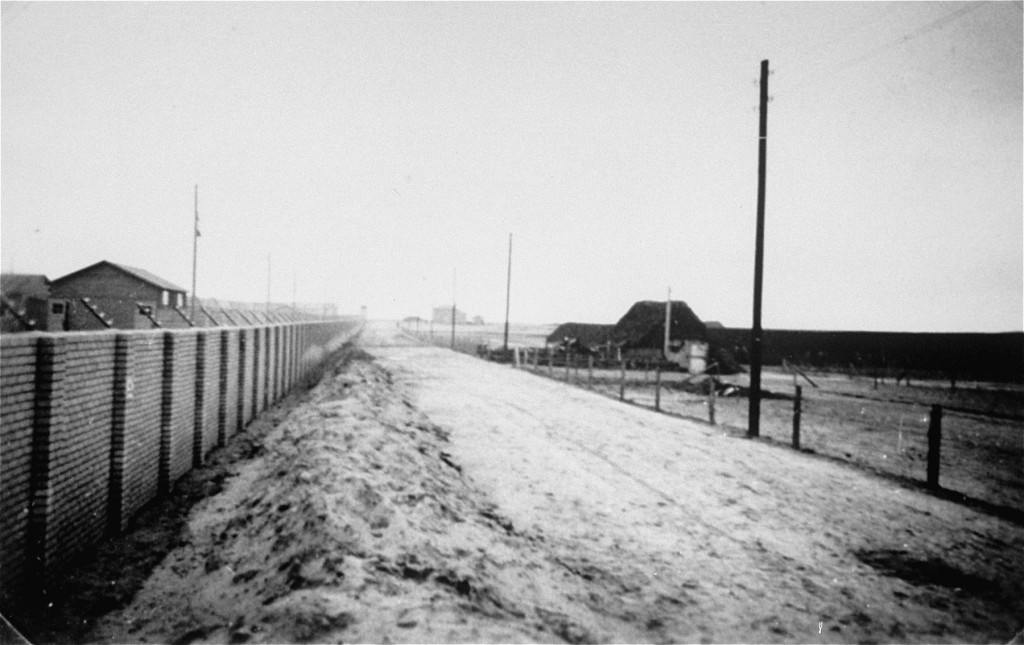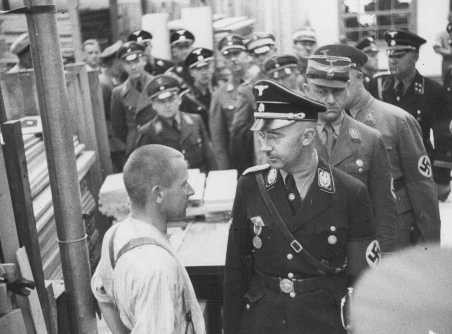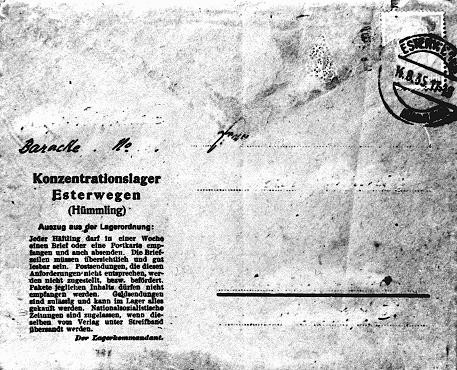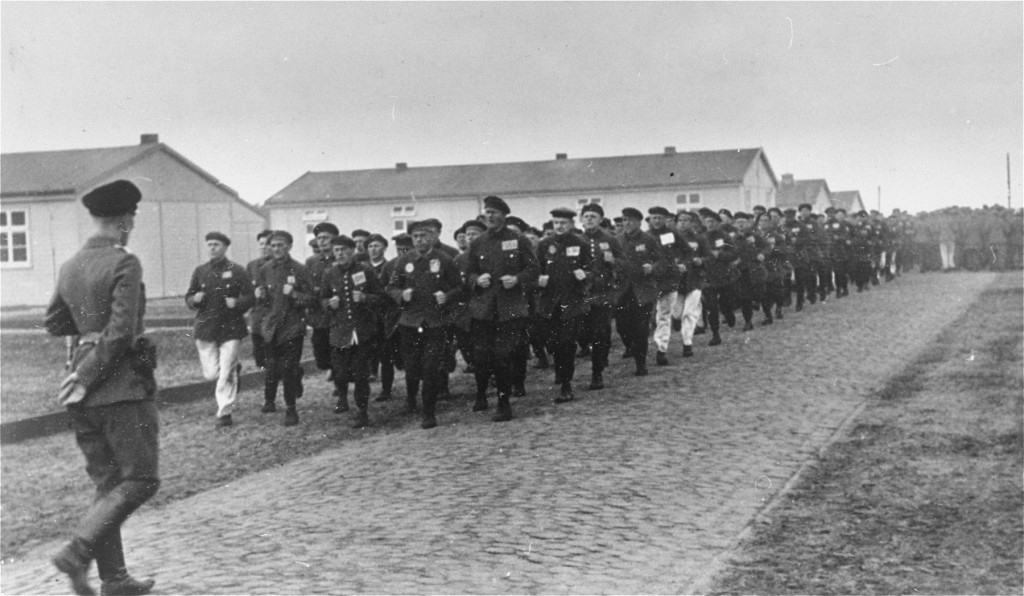
Esterwegen Concentration Camp
Between 1933 and 1945, Nazi Germany and its allies established more than 44,000 camps and other incarceration sites (including ghettos). The perpetrators used these locations for a range of purposes, including forced labor, detention of people deemed to be "enemies of the state," and mass murder. Millions of people suffered and died or were killed. Among these sites was the Esterwegen camp, near the German-Dutch border.
Key Facts
-
1
Esterwegen was located in the Emsland district of Prussia. In 1933, it was a subcamp of Papenburg concentration camp, a Prussian-controlled camp.
-
2
In 1934 Esterwegen came under the administration of the SS-Inspectorate of Concentration Camps.
-
3
Esterwegen closed as a concentration camp in 1936, but it continued to be a site of detention.
Esterwegen was part of the Nazi regime’s early system of concentration camps. It was located in the Emsland region of Prussia. The structure and administration of Esterwegen changed over time.
Context
The Early Camps
Detention camps in Nazi Germany were established soon after Adolf Hitler's appointment as chancellor in January 1933. They were created on an ad hoc, improvised basis to handle the large numbers of people arrested as opponents of the new regime. There were approximately 100 early camps (frühen Lager) located throughout Germany.
These camps were not uniform. They differed by location, administration, and purpose. This is because, in 1933, Germany was a federation made up of different states, including Prussia, Bavaria, and Saxony. Officials at the state and local level founded the early camps. Some of them were run by the SS (Schutzstaffel; Protection Squadron), others by the SA (Sturmabteilung; commonly known as the Storm Troopers). In some cases, the police or the justice ministry administered the early camps.
Most of the early camps only existed for a short period of time.
The Creation of the SS-Inspectorate of Concentration Camps

Between 1934 and 1936, SS leader Heinrich Himmler transformed the concentration camp system. Himmler and the SS took control of camps previously administered by other organizations. Himmler created a centralized system under the administration of an SS organization called the Inspectorate of Concentration Camps (Inspektion der Konzentrationslager, IKL).
Himmler and the IKL thought that many of the early camps were too small for their purposes. Instead, they built new camps. All of these new IKL camps had the same structure. The structure was based on the SS administration of Dachau. In 1937, there were only four main concentration camps: Dachau (near Munich), Buchenwald (near Weimar), Sachsenhausen (near Berlin), and Lichtenburg (near Leipzig). However, beginning in 1938 the camp system expanded significantly.
The Emsland Camps
Numerous early detention camps were established in the state of Prussia in 1933 and 1934. Prussia was by far Germany’s largest state. It made up more than 60 percent of German territory and the German population during the Weimar Republic.
Several of the Prussian camps were located in Emsland, a region that bordered the Netherlands. Emsland was relatively underdeveloped economically. It was also sparsely populated. The Nazis planned to use the camp inmates to transform Emsland. In particular, they were tasked with turning moors and heath (wetlands) into arable, farmable land.
Prisoners in the Emsland camps cut peat, removed it by railed handcarts, dispersed sand and granite, and unloaded barges from the nearby canal. As one prisoner, Nikolaus Wasser, recalled, the labor was difficult:
The work in the Ems marsh was very hard. Everyday, we had to break up the muddy moor. It began with digging a ditch … Through the urging of the guards and the use of terror, we reached the limits of our strength. The food and the sleep permitted us could not renew our strength, so it was harder for us to perform the work from one day to the next.
Esterwegen II and III: Subcamps of Papenburg
On August 2, 1933, Papenburg concentration camp opened as a Prussian State Concentration Camp (Staatliches Konzentrationslager Papenburg) in Emsland. While Papenburg was the main camp, there were numerous other smaller camps under its administration. These were called subcamps. By October 1933, Papenburg had four subcamps, which combined held 4,000 detainees. The subcamps were called Börgermoor, Esterwegen II, Esterwegen III, and Neusustrum. Each camp held approximately 1,000 prisoners.
Esterwegen II and Esterwegen III were located next to each other. They were built in the summer of 1933. Esterwegen II opened on August 11, 1933, and construction on Esterwegen III began three days later on August 14. Most of the prisoners in Esterwegen were political prisoners, many of them Communists. The most famous was Carl von Ossietzky, a pacifist who won the Nobel Peace Prize in 1935.

At first, Esterwegen II and III were guarded by the SS. However, this did not last long. The SS murdered three prisoners at Esterwegen II, and three prisoners at Esterwegen III. They particularly mistreated Jewish political opponents and prominent politicians. The SS also caused problems with the local population. This excessive violence disturbed the Prussian government, who wanted better control over camp conditions. On November 6, 1933, the Prussian police temporarily took over the administration of the camp and ousted the SS. On December 20, 1933, the Prussian police handed the administration of Esterwegen II and III over to the SA.
Over the course of 1933 and early 1934, the prisoner population of Esterwegen II and III declined significantly. By the end of April 1934 the total prisoner population of both camps was 1,162. In June 1934, the Esterwegen camps were combined with each other.
Esterwegen as an IKL Concentration Camp

In the summer of 1934, the combined Esterwegen II and III were officially converted into a concentration camp administered by the SS-Inspectorate of Concentration Camps (IKL) under SS leader Heinrich Himmler’s control. The IKL built a high outer wall surrounding the camp. The camp held 1,000 prisoners. Esterwegen existed as an IKL camp from August 1, 1934 to September 23, 1936. The camp prepared to close in the summer of 1936. At that time, the remaining prisoners were sent to help construct a new concentration camp called Sachsenhausen.
The SS sold Esterwegen to the Justice Ministry for 1.05 million Reichsmark (RM). They used some of these proceeds to finance Sachsenhausen. The Esterwegen location continued to serve as a site of detention throughout the Nazi era.

